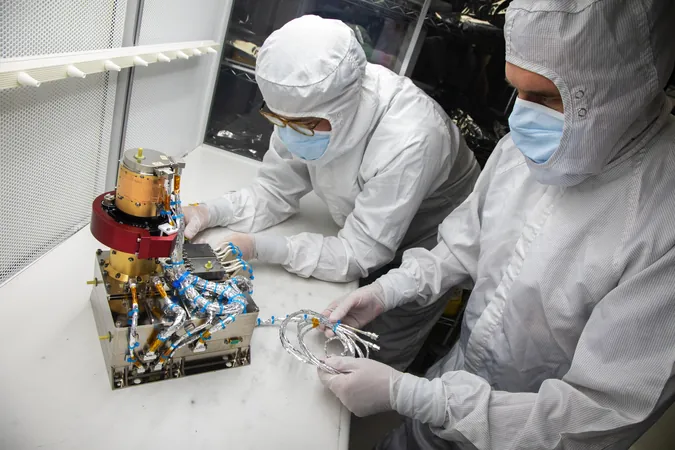
Groundbreaking Solar Wind Sensor Set to Revolutionize Space Weather Tracking!
2024-10-02
Author: Nur
Groundbreaking Solar Wind Sensor Set to Revolutionize Space Weather Tracking!
In an exciting development for space science, the Southwest Research Institute (SwRI) has successfully delivered and integrated its innovative Solar Wind Plasma Sensor (SWiPS) into a National Oceanic and Atmospheric Administration (NOAA) satellite designed to monitor space weather. This advanced sensor will play a crucial role in assessing the properties of ions emitted by the sun, including fast-moving particles from coronal mass ejections, which can have significant impacts on Earth's magnetic environment.
The NOAA Space Weather Follow On-Lagrange 1 (SWFO-L1) satellite will orbit the sun approximately one million miles away from Earth at a strategic location known as L1. This state-of-the-art satellite is equipped to remotely image the sun and conduct local measurements of the solar wind, high-energy particles, and the interplanetary magnetic field. Not only did SwRI develop SWiPS, but they will also support ongoing operations and data analysis with the intent of providing timely warnings for space weather events that could affect technologies like GPS, power systems, and astronaut safety due to elevated radiation levels.
Dr. Robert Ebert, principal investigator for SWiPS, expressed pride in the team’s achievement, stating, 'The delivery and integration of SWiPS is the culmination of four years of hard work by a very dedicated and talented team.' He emphasized that the instrument will provide real-time alerts of impending space weather phenomena, crucial for protecting our technological infrastructure and ensuring astronaut safety.
Currently, the SWiPS is undergoing environmental testing after its successful integration with the SWFO-L1 spacecraft. With this sensor, NOAA will gain critical insights into solar wind ion velocity, density, and temperature, allowing for improved prediction of geomagnetic storm severity.
The design of SWiPS stems from the Ion and Electron Sensor used in ESA's Rosetta mission, featuring a compact form factor and low resource needs which make it an ideal candidate for SWFO-L1 and similar missions. This underscores SwRI's strong capabilities in designing and fabricating instruments to measure the behaviors of space plasmas—ionized gases prevalent in Earth's vicinity and throughout the solar system.
Interestingly, the SWiPS project took off during the challenging times of the COVID-19 pandemic, when teams were required to work from home. Despite the obstacles in communication and supply chain disruptions, project leaders remained resilient. Michael Fortenberry, the system engineer for SWiPS, noted, 'Designing and developing a complex instrument under these conditions was especially challenging; however, we remained committed and succeeded in delivering the flight instrument to NASA.'
In a strategic collaboration with NASA, which oversees the mission for NOAA, the SWFO-L1 satellite is set to launch in 2025 alongside the Interstellar Mapping and Acceleration Probe (IMAP) aboard a SpaceX vehicle. This partnership not only enhances capabilities in monitoring solar weather but also aids in understanding the particles flowing from interstellar depths, further expanding our knowledge of space dynamics.
Stay tuned as we unravel how this cutting-edge technology will safeguard our planet against the whims of space weather!




 Brasil (PT)
Brasil (PT)
 Canada (EN)
Canada (EN)
 Chile (ES)
Chile (ES)
 España (ES)
España (ES)
 France (FR)
France (FR)
 Hong Kong (EN)
Hong Kong (EN)
 Italia (IT)
Italia (IT)
 日本 (JA)
日本 (JA)
 Magyarország (HU)
Magyarország (HU)
 Norge (NO)
Norge (NO)
 Polska (PL)
Polska (PL)
 Schweiz (DE)
Schweiz (DE)
 Singapore (EN)
Singapore (EN)
 Sverige (SV)
Sverige (SV)
 Suomi (FI)
Suomi (FI)
 Türkiye (TR)
Türkiye (TR)